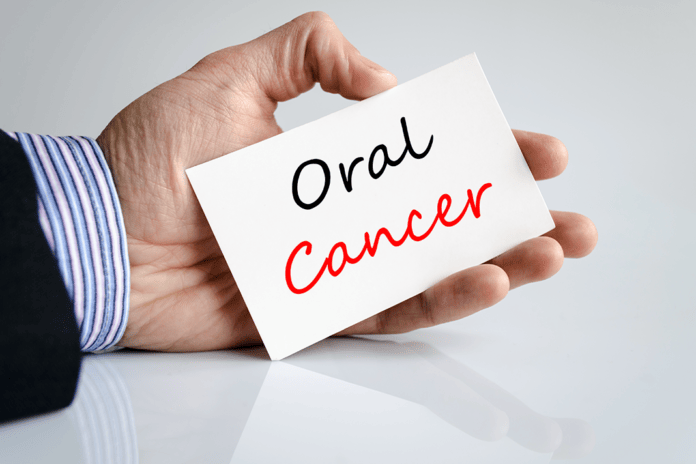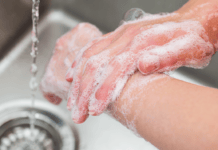Truth be told, cancer in its many forms has touched the lives of almost every single person I know. No one is safe from a cancer diagnosis. Countless children have been left without their parents, and countless parents have been left without answers. So many of us that have lost someone to cancer walk the desolate halls of grief; it is an unfortunate truth we do not walk alone. Those that are still fighting their battles, as well as those who have won, bear the scars of a war not easily fought.
Let me tell you about the first patient that ever made me cry.
I know what you’re thinking, what did this guy say, what did he do? Each of us has met a genuinely mean patient, and I am no exception to this fact. But the first patient that ever made me cry was not mean to me at all. He was not callous or cruel; he wasn’t even ignorant or obnoxious. The first patient that ever made me cry was my first oral cancer patient.
I first met this patient, let’s call him J, about a year after I was licensed when he found himself in my chair for a new patient appointment. J was diagnosed with nasopharyngeal cancer earlier that same year and was actively being treated with radiation and chemotherapy. J was experiencing extreme xerostomia as a result of his cancer treatments. This side effect, coupled with the inability to maintain a proper diet and oral hygiene routine, exponentially increased his caries risk.
J was encouraged by his oncologist to find a general dentist so his oral condition could be stabilized until his cancer treatment ceased. After reviewing his extensive medical file (bless this sweet man who brought copies of everything with him organized in a neat little notebook), I took my first look in his mouth and had to hold back a gasp. The angry red and white lesions of the oral mucositis that covered his soft palate and extended all the way down the back of his throat made me wince. One go-about with the explorer quickly revealed that the decay was rampant; J needed a lot of work, and we needed to temporize his teeth so that he could maintain function until a more permanent solution could be approached.
I was asked by both J and the dentist to take an FMX so we could assess the true extent of the decay, and prioritize the treatment plan. This was approved by J’s oncologist, for those of you wondering. Knowing that I would have to touch the mucositis to get the images I needed, I looked J in the eyes, XCP in my hand ready to go, and told him that it was going to hurt. Like most cancer patients I have met, J was a tough cookie. He put on his most dashing, bravado smile, and said, “Do your worst.”
Two periapicals into the series, J started to cry. I asked him if he wanted to stop, but he just asked me for some tissues and told me to keep going. Following J’s example, I put on my brave face and did as he asked. After we finished the series, I excused myself from the room to get the dentist. I found him waiting in the hall for me; he had listened to our exchange throughout the series, and he could tell I was upset. He reassured me that I made it as painless as possible, that I did what I had to do to do the best for J. His words were kind, but at that moment, they meant nothing. My heart was breaking.
J was just your average 40-something guy who went to his otolaryngologist for a routine visit and was now at risk of losing so much more than just his teeth. J did not drink heavily, and he did not smoke; he had no more risk factors than I did myself. He had been through hell and back, and by trying to help him, I had caused him additional pain. I made him cry. I walked right past the dentist, went into the bathroom, and cried for the harsh injustice of it all.
Oral and pharyngeal cancers account for 2.9% of all new cancer cases in the US1. Over the last ten years alone, rates for new oral cancer cases have increased by 0.6%; risk factors include tobacco use, heavy alcohol use, and human papillomavirus (HPV) infection. Those who are diagnosed early, and whose cancer remains localized to the origin site, have a five-year survival rate of 83.7%. For those individuals whose cancer has spread to the regional lymph nodes, that same survival rate drops to 64.2%. For those with distant site metastases, the rate drops to an astounding 38.5%. Despite our most dedicated screening efforts and advanced technologies, death rates for oral cancer have remained stable over the last ten years, with death being more common amongst men and those individuals aged 55-641.
J may have been the first, but he was certainly not the last oral cancer patient I have met in my last six years as a hygienist. I have conversed at length with survivors about their diagnosis, initial prognosis, and successful therapies. I have argued with patients who think I am being overzealous when I urge them to go for consults. I have hugged those who have come back with good news and comforted those that have not been as fortunate. I count my own lucky stars that I have never lost someone, personally or professionally, to oral cancer.
As evidenced by the statistics, early detection is critical for oral cancer prognosis. J was lucky to be diagnosed early; he has been cancer-free for the last three years. As we head into Oral Cancer Awareness Month, we must remember that we are the first line of defense, the champions of early detection. Our patients trust us to be the watcher on the walls for all things problematic in their mouths. So make sure to grab those tongues, palpate those nodes, and make them each say AHHH! You never know what you might find that might just save a life.
SEE ALSO: How to Discuss Periodontal Disease & Lung Cancer with Patients
DON’T MISS: The Relationship Between Poor Dental Hygiene and Cancer
References:
- “Cancer Stat Facts: Oral Cavity and Pharynx Cancer.” Surveillance, Epidemiology, and End Results Program. Accessed February 26, 2018. https://seer.cancer.gov/statfacts/html/oralcav.html.












